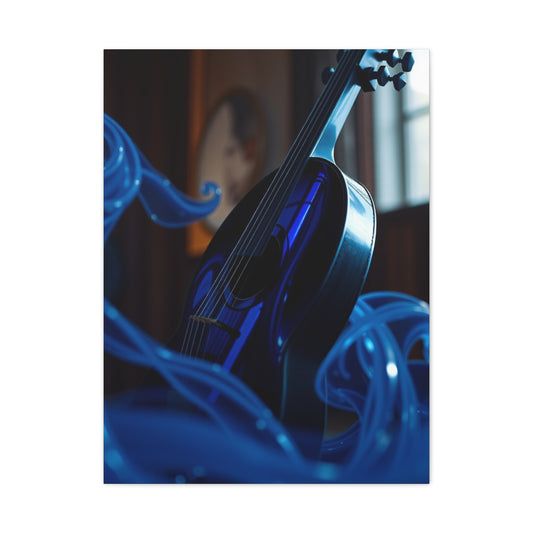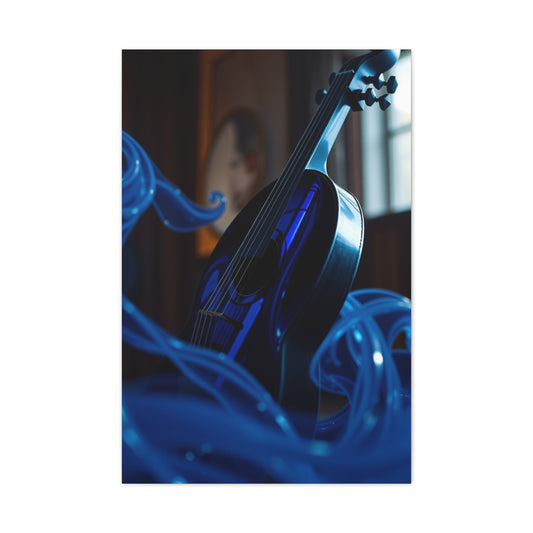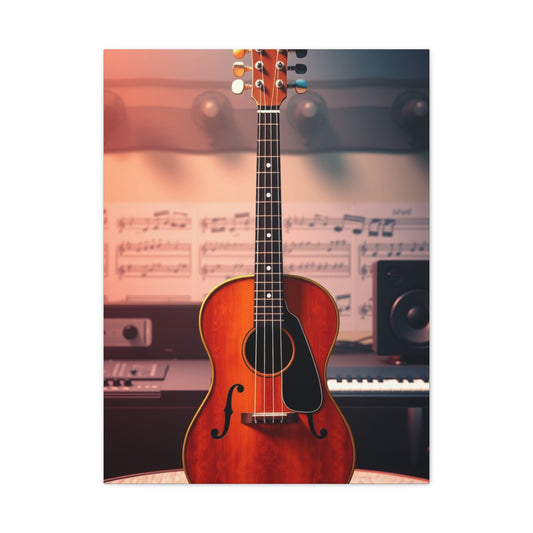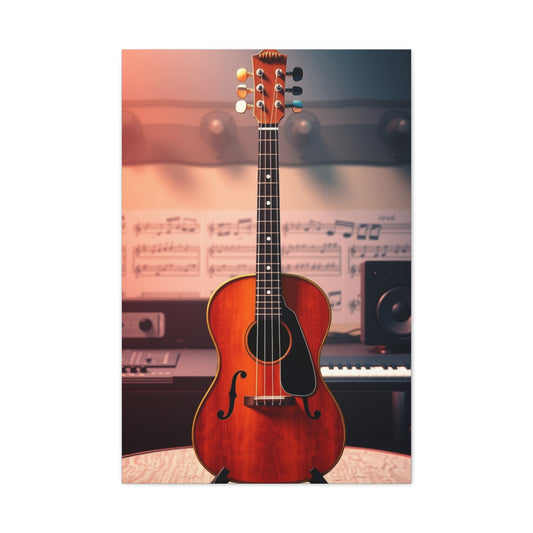Lighting is one of the most important elements in any kitchen. It not only ensures that your cooking area is functional but also enhances the overall aesthetic of the space. Imagine preparing meals in a dimly lit kitchen; the task would not only be inconvenient but also unsafe. A well-lit kitchen allows for easier handling of knives, cooking utensils, and ingredients, while also setting the tone and mood of the space. The choice of lighting, therefore, plays a crucial role in modern kitchen design. From ambient lighting that illuminates the entire room to task lighting focused on work surfaces and decorative lighting that adds character, each type serves a distinct purpose.
Modern kitchens often feature a combination of lighting types to create a layered effect. Ambient lighting provides general illumination, ensuring that the space is bright enough for daily activities. Task lighting is more focused, designed to illuminate specific areas like countertops, sinks, or cooking zones where precision is needed. Decorative lighting serves an aesthetic purpose and can act as a focal point, enhancing the style of the kitchen. Choosing the right fixtures, shapes, and placements can transform the kitchen from a mere functional space to a visually appealing area that invites family and guests to gather.
Concave Pendant Lights for Rustic Kitchens
Concave pendant lights are an excellent choice for kitchens with a rustic or countryside aesthetic. These lights typically feature a curved, bowl-like design that provides both focused illumination and a decorative element. Kitchens with wooden countertops, paneling, and open shelving benefit from the warm glow of concave lights, creating a welcoming and cozy atmosphere. They work particularly well over islands or central work areas, adding symmetry and style to the design.
A rustic kitchen often combines natural materials like wood and stone to create a warm and inviting environment. The addition of concave pendant lights harmonizes with these materials, highlighting textures and enhancing the overall look. The gentle downward light ensures that countertops and preparation areas are well-lit, reducing shadows and improving visibility. Concave pendant lights can come in various finishes, including matte, metallic, and painted wood, making them versatile for different rustic themes. Their elegant curves add a softness to the design, balancing the stronger lines of wooden cabinetry or beams.
The beauty of concave lighting lies not only in its visual appeal but also in its practicality. It can be installed in clusters or pairs, allowing homeowners to control the intensity of light in the kitchen. Adjustable cords or rods provide flexibility in height, ensuring that the light is positioned optimally for cooking and dining. By choosing concave lights that complement the color palette of the kitchen, such as neutral whites, warm browns, or muted metallics, the design becomes cohesive and aesthetically pleasing.
Bell-Shaped Pendant Lighting for Minimalist Kitchens
Minimalist kitchens thrive on simplicity, clean lines, and uncluttered spaces. In such settings, bell-shaped pendant lighting can act as a stylish focal point without overwhelming the design. These lights, reminiscent of traditional bell shapes, bring a sense of elegance and understated charm to modern kitchens. Their soft curves contrast with the linear elements of cabinets and countertops, creating visual interest.
Bell-shaped pendant lights are particularly effective in all-white kitchens, where they provide contrast and prevent the space from feeling too sterile. They can be made of materials like glass, metal, or ceramic, and often feature finishes that complement minimalist color schemes. Hanging a single large bell pendant over a kitchen island or multiple smaller ones in a row can enhance symmetry and balance in the design. These lights provide direct illumination for work surfaces while also casting ambient light that contributes to a welcoming atmosphere.
Incorporating indoor plants in the kitchen can further enhance the effect of bell-shaped pendants. The combination of greenery and soft lighting creates a fresh and inviting environment. Large windows that allow natural light to enter during the day work in tandem with pendant lighting to create a layered lighting effect. The result is a kitchen that feels bright, airy, and functional while maintaining a refined, minimalist aesthetic.
Decorative Drop-Down Lights for Kitchen Islands
Kitchen islands are not only functional workspaces but also central design elements in modern kitchens. Installing decorative drop-down lights above islands adds both illumination and visual appeal. These lights often feature artistic or antique-inspired designs, making them a statement piece that draws attention. A drop-down fixture can complement other lighting elements such as recessed ceiling lights or wall-mounted sconces, creating a balanced and layered lighting scheme.
In kitchens with wooden flooring and neutral cabinetry, decorative drop-down lights can enhance the warmth and elegance of the space. Antique candle-style lights, chandelier-inspired designs, or modern geometric fixtures can all work well depending on the kitchen’s theme. Positioning the lights directly above the island ensures that preparation areas are well-lit while also highlighting the island’s design features.
Recessed lights incorporated into false ceilings with wooden paneling can further enhance the overall ambiance. These lights provide soft background illumination that prevents harsh shadows and creates an even glow throughout the room. Combining decorative drop-down lights with recessed lighting and under-cabinet fixtures ensures that the kitchen remains bright and functional while also being visually engaging.
LED Ring Lights for Modern Minimalist Kitchens
LED ring lights are a contemporary lighting solution ideal for modern minimalist kitchens. Their sleek design and energy-efficient technology make them both practical and stylish. These lights can be used above small kitchen islands or dining areas, providing focused illumination without taking up visual space. The circular shape adds a modern aesthetic, enhancing the clean lines and simplicity of minimalist kitchens.
LED ring lights are often adjustable, allowing homeowners to control brightness and ambiance according to the time of day or task. They emit soft, even light that reduces shadows and glare, making cooking and dining more comfortable. The minimalist design ensures that the fixtures blend seamlessly into the kitchen while still offering a design-forward element.
Pairing LED ring lights with simple, neutral color schemes reinforces the modern aesthetic. The lights’ reflective surfaces can accentuate metallic finishes in appliances or cabinet hardware, adding subtle sophistication. Their versatility makes them suitable for both functional and decorative purposes, serving as a primary light source while also enhancing the visual appeal of the space.
Classic Candle Chandeliers for Black and White Kitchens
For kitchens that embrace a monochrome color palette, classic candle chandeliers can add elegance and drama. These lights often feature multiple upright candle-shaped bulbs and ornate designs that create a warm, inviting glow. A black-and-white kitchen benefits from the contrast and visual interest that a chandelier provides, transforming a simple space into a striking and stylish environment.
Chandeliers can be paired with wall-mounted candle-style lamps to reinforce the theme and create a layered lighting effect. The combination of overhead and wall lighting ensures that every corner of the kitchen is illuminated, enhancing both functionality and ambiance. Classic chandeliers work particularly well in kitchens with high ceilings, adding vertical interest and making the space feel grander.
Choosing the right materials and finishes is essential for integrating a chandelier into a modern black-and-white kitchen. Polished metals, wrought iron, or matte black finishes can complement cabinetry and appliances, while soft, warm bulbs provide a cozy glow. Chandeliers not only serve as a lighting source but also act as decorative elements that elevate the overall style of the kitchen.
Arched Chandeliers for Retro-Inspired Kitchens
Lighting can completely redefine the ambiance of a kitchen, especially when paired with retro-inspired interiors. Arched chandeliers bring a sense of nostalgia and charm to the space, reminiscent of designs from past decades. These fixtures typically feature soft curves and multiple bulbs, casting warm, inviting light across the kitchen. A retro kitchen with wooden drawers, steel chimneys, and arched bar counters can be dramatically enhanced with the addition of an arched chandelier.
Such lighting complements small kitchen spaces by creating visual interest without overwhelming the area. The glow from arched chandeliers highlights design features such as wooden paneling, patterned tiles, or unique countertop materials. Additionally, the shape of these chandeliers often mimics architectural curves in the kitchen, tying together the overall theme. A warm, diffused light emitted by these fixtures ensures a cozy atmosphere, perfect for family gatherings or intimate cooking sessions. The interplay of light and shadow enhances textures and gives depth to the kitchen design.
In retro kitchens, incorporating arched chandeliers alongside natural light from windows creates a dynamic lighting environment. During the day, sunlight enhances the colors and textures, while the chandelier provides ambient illumination during evenings. Positioning the chandelier above an arched bar counter or central island ensures functional lighting for tasks like chopping, mixing, and plating. The warm light also accentuates decorative elements, making even simple kitchens appear luxurious and thoughtfully designed.
Industrial Lighting for Contemporary Kitchens
Industrial-style lighting has become increasingly popular in contemporary kitchens. Fixtures in this style often feature geometric shapes, exposed bulbs, and metal finishes that create a bold, structured aesthetic. Industrial lighting works particularly well in kitchens with dark walls, concrete or wooden floors, and steel appliances. The stark contrasts and strong lines of industrial lights add character and reinforce the overall modern design theme.
Lighting in an industrial kitchen serves both functional and decorative purposes. Fixtures in isosceles trapezoid shapes, cages, or pipe-inspired designs provide ample illumination while doubling as eye-catching elements. These lights often have an adjustable height, making them ideal for installation above countertops or islands. They cast focused light on work areas, improving visibility for food preparation while creating dramatic shadows and visual interest in the surrounding space.
The industrial aesthetic can be softened with complementary materials such as wood countertops or neutral-colored cabinets. Combining industrial pendant lights with recessed ceiling lights or under-cabinet illumination ensures that the kitchen remains bright and practical without losing its edgy appeal. The metallic finishes of industrial fixtures can also reflect light subtly, enhancing the brightness and adding a polished feel to the kitchen.
Recessed Lighting for Subtle Elegance
Recessed lighting is a versatile option for kitchens that prioritize subtlety and sophistication. Installed into ceilings, these lights offer clean lines, minimal intrusion, and a modern, streamlined look. Recessed lights are ideal for providing general ambient illumination without drawing attention away from other design elements in the kitchen.
One of the key advantages of recessed lighting is its ability to distribute light evenly across the space. When placed strategically, it can highlight key areas such as countertops, islands, and sinks, while minimizing shadows. Recessed lighting also pairs well with decorative fixtures, allowing homeowners to combine ambient and accent lighting without cluttering the ceiling. For kitchens with false ceilings or wooden panel work, recessed lights create a smooth, continuous glow that enhances the texture and warmth of the materials.
Recessed lights are available in a variety of finishes, including matte, metallic, and white, making them suitable for a wide range of kitchen designs. They can be installed in clusters, rows, or individual spots depending on the layout and size of the space. Additionally, dimmable options allow for customizable brightness, enabling users to adjust lighting according to different times of day or cooking needs. The combination of flexibility, efficiency, and elegance makes recessed lighting an essential component of modern kitchens.
Under-Cabinet Lighting for Functional Appeal
Under-cabinet lighting is an essential addition to any functional kitchen design. These lights are installed beneath upper cabinets, providing direct illumination onto countertops and work surfaces. This type of lighting ensures that areas where chopping, mixing, or baking takes place are adequately brightened, improving both safety and convenience.
There are several options for under-cabinet lighting, including LED strips, puck lights, and linear fixtures. LED strips are energy-efficient, provide uniform light, and can be easily customized to fit the length of the cabinets. Puck lights offer small, focused spots of light, ideal for highlighting specific areas or decorative elements. Linear fixtures provide continuous illumination and can complement other lighting types such as pendant or recessed lights.
Beyond functionality, under-cabinet lighting adds aesthetic appeal to the kitchen. It creates a subtle glow that highlights the backsplash, countertop textures, and cabinetry finishes. For kitchens with marble, tile, or wood countertops, under-cabinet lighting enhances the visual depth and richness of materials. It also adds a modern touch to traditional kitchens, bridging the gap between classic design elements and contemporary lighting solutions.
Pendant Lights Over Islands and Dining Areas
Pendant lights remain one of the most popular choices for kitchen islands and dining areas. They are versatile, stylish, and functional, offering both focused task lighting and decorative appeal. Pendant fixtures come in a wide variety of shapes, sizes, and materials, allowing homeowners to match the lighting to the overall kitchen design.
In addition to providing illumination for cooking and dining, pendant lights serve as a central design element. Hanging multiple pendants in a linear arrangement over an island or a dining table creates a balanced and harmonious look. Materials like glass, metal, and wood can be combined to enhance the style, whether rustic, minimalist, or industrial. Pendant lights can also be adjusted in height, ensuring that the light is directed precisely where it is needed without creating glare or shadows.
The placement and spacing of pendant lights are crucial for achieving both functionality and aesthetic balance. For islands, pendants should be positioned so that they illuminate work surfaces without obstructing views or movement. Over dining tables, the height and glow of the pendants create a welcoming atmosphere, making meals more enjoyable and visually appealing.
Chandeliers as Statement Pieces
Chandeliers are no longer reserved solely for formal dining rooms or grand entryways; they have found their place in kitchens as statement lighting fixtures. A chandelier can serve as the centerpiece of a kitchen, creating a sense of luxury and elegance. From crystal designs to modern minimalistic shapes, chandeliers offer a wide range of options for homeowners seeking to make a bold visual impact.
In addition to their decorative appeal, chandeliers provide ambient light that can fill large kitchens evenly. They work well in open-plan spaces where the kitchen is integrated with dining and living areas. By reflecting light off polished surfaces and complementing natural light sources, chandeliers enhance the overall brightness and ambiance of the room. Choosing the right chandelier involves considering size, style, and placement to ensure that it harmonizes with cabinetry, countertops, and flooring without overpowering the space.
Modern chandeliers with integrated LED bulbs offer energy efficiency without compromising design. Adjustable height options and dimmable features allow homeowners to customize the lighting according to mood or activity. Whether paired with recessed lights, pendant fixtures, or under-cabinet illumination, chandeliers provide versatility while serving as a focal point that elevates the kitchen’s interior design.
Combining Multiple Lighting Styles
A modern kitchen often benefits from a combination of lighting styles to achieve a layered effect. Layered lighting involves using different types of lights—ambient, task, and decorative—in a cohesive arrangement to ensure functionality while enhancing aesthetics. Combining pendant lights, recessed lighting, under-cabinet fixtures, and chandeliers creates a well-balanced environment that caters to cooking, dining, and social interactions.
The advantage of layered lighting lies in its flexibility. Ambient lights provide general illumination, while task lights ensure that specific areas are adequately brightened for detailed work. Decorative lighting adds personality and style, transforming the kitchen into a visually engaging space. By carefully considering placement, intensity, and color temperature, homeowners can create a harmonious lighting scheme that meets both practical and aesthetic needs.
Selecting complementary materials and finishes for different light fixtures ensures cohesion in the design. For instance, a combination of metal pendants, wooden chandeliers, and recessed LED lights can unify rustic and modern elements. Similarly, matching color tones and finishes across fixtures reinforces a seamless visual flow. Layered lighting not only enhances functionality but also adds depth, dimension, and sophistication to the kitchen.
Smart Lighting Solutions for Modern Kitchens
Technology has introduced innovative ways to manage kitchen lighting, making spaces more efficient and adaptable. Smart lighting solutions allow homeowners to control brightness, color temperature, and even lighting schedules through apps or voice assistants. This level of control enhances both convenience and energy efficiency, allowing kitchens to be lit precisely according to task and mood.
Smart LED bulbs can mimic natural daylight or create warm, cozy tones depending on the time of day or activity. Integration with sensors ensures that lights turn on automatically when someone enters the kitchen and turn off when the space is empty, reducing energy consumption. Smart lighting can also be programmed for different zones within the kitchen, providing targeted illumination over islands, sinks, or work counters while maintaining overall ambient light.
The aesthetic flexibility offered by smart lighting is particularly valuable in modern kitchens. Homeowners can experiment with color and intensity to enhance the visual appeal of cabinetry, countertops, and backsplash tiles. Smart solutions also allow for synchronization with other home systems, ensuring that kitchen lighting complements lighting in adjacent living or dining areas. By combining traditional fixtures with smart technology, kitchens can achieve a balance of style, functionality, and modern convenience.
Color-Driven Kitchen Lighting
The color of kitchen lighting can significantly influence the mood, functionality, and aesthetic appeal of a space. Light temperature, ranging from warm to cool tones, can create vastly different atmospheres. Warm lighting, with hues of yellow or amber, creates a cozy and inviting environment, perfect for intimate dinners or relaxed mornings. Cool lighting, such as white or bluish tones, enhances clarity and focus, making it ideal for detailed tasks like chopping, measuring, or cooking intricate recipes.
In modern kitchens, integrating color-driven lighting allows homeowners to adapt the environment based on activity. Adjustable LED lights or smart bulbs offer the flexibility to shift between warm and cool tones depending on time of day, occasion, or task. This approach also enhances the visual impact of the kitchen’s materials, highlighting the richness of wooden cabinetry or the sleekness of metallic finishes.
Color-driven lighting can also be employed to create zones within the kitchen. For example, a warm glow over the dining area fosters relaxation, while a cooler, brighter tone above workstations improves visibility and precision. This subtle interplay of colors creates depth and dimension, turning a simple kitchen into a layered and dynamic environment. Choosing fixtures that complement the kitchen’s color palette ensures cohesion, while the light itself acts as a design element enhancing the room’s personality.
Glass and Crystal Fixtures for Elegance
Glass and crystal fixtures are timeless choices for kitchens seeking an elegant touch. These materials reflect light beautifully, creating a sparkling effect that elevates the overall ambiance. From crystal chandeliers above islands to delicate glass pendants over dining tables, such fixtures can transform ordinary kitchens into sophisticated spaces.
Incorporating glass or crystal lighting works particularly well in kitchens with reflective surfaces, such as marble countertops, high-gloss cabinetry, or metallic appliances. The reflective quality amplifies natural and artificial light, creating a sense of spaciousness. Even small kitchens benefit from this approach, as the refracted light opens up the room visually, making it feel larger and brighter.
Designers often recommend pairing glass or crystal fixtures with simpler lighting types like recessed or under-cabinet lights to prevent visual clutter. The combination ensures that the kitchen remains functional while maintaining its elegance. Furthermore, glass and crystal fixtures come in a variety of shapes, from geometric designs to flowing organic curves, allowing homeowners to select options that align perfectly with their kitchen theme.
Track Lighting for Flexible Illumination
Track lighting is a versatile and modern solution for kitchens that require adaptable illumination. Fixtures are mounted on a linear track, allowing the lights to be adjusted, rotated, or repositioned as needed. This flexibility ensures that all areas, from countertops to islands, receive optimal lighting. Track lighting is particularly useful in kitchens with irregular layouts, multiple work zones, or open-concept designs where precise control over light placement is essential.
These systems often feature energy-efficient LED bulbs that provide bright, consistent illumination. The directional capability allows for targeted lighting, highlighting specific areas such as sinks, stove tops, or preparation counters. Homeowners can also adjust the intensity of the light depending on the task, ensuring safety and convenience.
Beyond practicality, track lighting can serve as a design element. Sleek, metallic finishes and contemporary shapes add a modern aesthetic, while the flexibility of positioning supports creative lighting compositions. Track lighting can be combined with pendant lights or chandeliers to enhance visual interest and achieve a layered lighting effect, ensuring that functionality and style coexist seamlessly.
Layered Lighting Techniques for Visual Depth
Layered lighting involves the strategic combination of ambient, task, and accent lighting to create a dynamic and visually engaging kitchen. Ambient lighting provides general illumination, ensuring the room is uniformly bright. Task lighting focuses on specific work areas, while accent lighting highlights decorative elements, textures, or architectural features. Together, these layers transform kitchens from flat, one-dimensional spaces into immersive environments.
Implementing layered lighting begins with planning zones within the kitchen. The cooking zone, preparation areas, and dining space each require tailored illumination. For example, recessed ceiling lights can provide general brightness, under-cabinet LEDs illuminate countertops, and pendant or chandelier lighting adds aesthetic appeal above islands or dining tables. Accent lights, such as wall-mounted sconces or LED strips under shelves, enhance textures and focal points.
Layered lighting not only improves functionality but also contributes to the emotional impact of the space. Warm, dimmable lights in certain areas create comfort and intimacy, while bright, cool task lights enhance focus and efficiency. This multi-dimensional approach allows homeowners to adapt the kitchen’s mood, transforming it from a practical workspace to a welcoming social hub.
Pendant Variations for Unique Kitchen Styles
Pendant lights are highly versatile, available in a multitude of designs to suit diverse kitchen aesthetics. From bell-shaped and concave pendants to geometric and industrial forms, these fixtures can complement rustic, contemporary, minimalist, or eclectic interiors. Selecting the right pendant variation ensures cohesion between lighting and overall kitchen design.
Rustic kitchens benefit from wooden or metal pendants that echo natural textures. Minimalist kitchens thrive on sleek, simple shapes in neutral tones, while industrial kitchens incorporate bold, geometric designs with exposed bulbs and metallic finishes. Pendant lighting is particularly effective above islands or breakfast bars, where it provides focused illumination and creates visual interest.
Adjustable pendants offer additional flexibility. Homeowners can modify height, orientation, or cluster arrangements to achieve desired lighting intensity and style. This adaptability allows pendants to serve both practical and decorative purposes, balancing illumination with aesthetic appeal. Combining different pendant variations within the same kitchen can create a playful, layered effect while maintaining harmony with other lighting fixtures.
Decorative Ceiling Fixtures
Decorative ceiling fixtures encompass a wide range of designs, from ornate chandeliers to modern geometric lights. These fixtures act as focal points, elevating the overall style of the kitchen. Unlike purely functional lights, decorative ceiling fixtures emphasize visual appeal and can tie together other design elements in the space.
In contemporary kitchens, geometric shapes, metallic finishes, and minimalist designs dominate. These fixtures complement clean lines, sleek cabinetry, and open layouts. In contrast, traditional kitchens may favor chandeliers, antique-style lanterns, or ornate glass fixtures to reinforce a classic aesthetic. Placement is crucial, with central installation above islands, dining tables, or main work areas ensuring that light is distributed evenly while drawing attention to design details.
Decorative ceiling fixtures also interact well with other forms of lighting. Pairing them with recessed, under-cabinet, or track lights creates a layered and balanced effect. The combination ensures that all tasks are adequately illuminated while maintaining the decorative fixture as a standout feature. Materials like glass, crystal, metal, and wood enhance the fixture’s visual impact, allowing the kitchen to exude sophistication and style.
Lighting for Small Kitchens
Small kitchens present unique challenges in terms of lighting. Limited space requires careful planning to avoid clutter and ensure adequate brightness. Layered lighting, compact fixtures, and reflective materials are essential strategies for small kitchen spaces. Recessed lights and LED strips work well to provide general illumination without consuming space.
Pendant lights can be scaled down or grouped in multiples to maintain proportion. Wall-mounted fixtures and under-cabinet lights ensure that countertops and work areas are adequately lit. Utilizing reflective surfaces like glossy cabinets, glass backsplashes, or metallic accents amplifies the impact of light, making the kitchen appear larger and more open.
Color temperature plays a crucial role in small kitchens. Warm lighting adds comfort and coziness, while cooler tones enhance visibility and clarity. Combining different lighting types and carefully considering fixture placement ensures a balanced, functional, and aesthetically pleasing environment, even in compact spaces.
Lighting for Large Kitchens
Large kitchens require strategic lighting to ensure that all areas are sufficiently illuminated. A combination of ambient, task, and accent lighting is essential to prevent dark zones and uneven illumination. Recessed ceiling lights provide general brightness, while pendant lights or chandeliers highlight central islands or dining areas.
In expansive kitchens, layering accent lights enhances architectural features, such as high ceilings, textured walls, or open shelving. Track lighting offers flexibility, allowing lights to be repositioned based on specific needs. Multiple light zones can be created to accommodate cooking, dining, and social areas within the same space, ensuring that the kitchen is both functional and inviting.
Large kitchens also benefit from statement lighting fixtures. Oversized chandeliers or clusters of pendants add visual interest and prevent the space from feeling empty or impersonal. Proper integration of decorative and functional lights ensures that the kitchen remains cohesive, balanced, and visually engaging.
The Role of Natural Light in Kitchen Design
Natural light remains a critical component of kitchen lighting, complementing artificial fixtures and enhancing the overall environment. Large windows, skylights, and glass doors allow sunlight to flood the space, providing warmth, clarity, and energy efficiency. The interplay of natural and artificial light enhances colors, textures, and materials in the kitchen.
Designing a kitchen to maximize natural light involves considering window placement, reflective surfaces, and light-colored materials. White or neutral walls, glossy cabinetry, and glass fixtures amplify daylight, reducing the need for artificial lighting during the day. Combining natural light with adjustable artificial fixtures ensures consistent illumination throughout the day, adapting to varying levels of sunlight and activity.
Integrating natural light also contributes to the emotional impact of the kitchen. Sunlit spaces feel more open, vibrant, and inviting, creating a positive atmosphere for cooking, dining, and social interaction.
Themed Kitchens and Lighting
Themed kitchens allow homeowners to express personality and style while creating a cohesive design narrative. Lighting plays a vital role in reinforcing these themes, whether the kitchen is modern, rustic, industrial, or retro. Selecting fixtures that complement cabinetry, countertops, and overall decor enhances the thematic impact.
In a rustic-themed kitchen, warm-toned pendants, wooden chandeliers, or wrought iron fixtures harmonize with natural materials such as wood and stone. The warm glow accentuates textures, creating a cozy and inviting space. In contrast, industrial kitchens benefit from metal finishes, geometric designs, and exposed bulbs, enhancing the edgy, functional aesthetic. Retro kitchens thrive with arched chandeliers, flower-shaped pendants, or classic candle-style fixtures, evoking nostalgia while maintaining practicality.
Minimalist kitchens focus on simplicity and clean lines, with lighting integrated seamlessly into the design. Sleek, understated pendants, recessed lights, and LED strips maintain the uncluttered look while providing adequate illumination. Layering these fixtures ensures functionality without detracting from the minimalist aesthetic.
Statement Lighting for Focal Points
Statement lighting transforms kitchens from functional spaces into visual showcases. These fixtures act as focal points, drawing attention to key areas such as islands, dining zones, or architectural features. Statement lights can be bold chandeliers, oversized pendants, or intricately designed glass fixtures.
Choosing the right statement lighting involves balancing size, style, and placement. Oversized fixtures work well in large kitchens with high ceilings, adding grandeur and proportion. In smaller kitchens, a medium-sized pendant or cluster of smaller pendants can achieve a dramatic effect without overwhelming the space. The materials, finish, and light color should complement the kitchen design, ensuring cohesion while making a visual impact.
Statement lighting also enhances the functionality of the kitchen. A well-placed fixture provides focused illumination on work surfaces or dining areas while creating ambiance in the surrounding space. By combining statement lights with other types of fixtures, homeowners can achieve layered lighting that is both practical and aesthetically appealing.
Creative Lighting for Kitchen Islands
Kitchen islands are multifunctional spaces that serve as preparation zones, dining areas, and social hubs. Proper lighting enhances these functions while contributing to the overall design. Pendant lights remain the most popular choice for islands due to their versatility and focused illumination.
Clustered pendants, linear arrangements, or adjustable height fixtures allow homeowners to customize the lighting based on the island’s size and use. Combining ambient lighting with decorative pendants ensures that the island is both well-lit for tasks and visually prominent. LED strips along the island edges or recessed ceiling lights can provide subtle supplementary illumination, enhancing the design without cluttering the space.
Materials and finishes for island lighting play a critical role in aesthetic harmony. Metal pendants, glass fixtures, or wooden designs can all complement the island’s cabinetry, countertop, and surrounding elements. Additionally, color temperature should be considered to ensure both functionality and mood enhancement. Warm tones create a cozy, welcoming environment, while cooler tones enhance clarity and precision during cooking tasks.
Innovative Pendant Designs
Modern kitchens encourage experimentation with innovative pendant designs that combine aesthetics with functionality. Unique shapes, materials, and arrangements allow lighting to become a design statement. Geometric pendants, sculptural designs, and asymmetrical clusters are popular choices that add personality to contemporary kitchens.
Glass pendants with textured or colored finishes can create a visual focal point while diffusing light to produce ambient glow. Metal pendants in matte or polished finishes reinforce industrial or modern themes. Even recycled materials, such as bamboo or reclaimed wood, can be used creatively to produce environmentally conscious and visually appealing fixtures.
Innovative pendant designs also offer flexibility in height, intensity, and orientation. Adjustable pendants allow homeowners to customize the lighting for specific tasks or change the ambiance based on time of day or social occasion. Clusters of pendants in varying sizes can create depth and dimension above islands or dining tables, enhancing both form and function.
Recessed and Track Lighting Combinations
Combining recessed and track lighting provides maximum flexibility and control over illumination. Recessed lights create an even base of ambient lighting, while track lights allow for targeted, directional illumination. This combination ensures that every corner of the kitchen is adequately lit and that specific tasks, such as chopping or cooking, are safely and efficiently performed.
Track lighting can be adjusted to highlight particular areas or decorative elements, creating visual interest and depth. Recessed lights maintain a clean, unobtrusive look that complements modern, minimalist, or traditional kitchens. Together, these fixtures contribute to a layered lighting approach, balancing function with style.
This combination also works well in open-plan kitchens, where different zones require distinct lighting needs. Task zones, dining spaces, and display areas can each be lit independently while maintaining overall cohesion. The result is a functional, aesthetically pleasing kitchen that adapts to a variety of activities and moods.
Ambient and Accent Lighting Strategies
Ambient and accent lighting are essential for creating depth, mood, and visual interest in the kitchen. Ambient lighting provides general illumination for the entire space, ensuring that it is bright enough for all activities. Accent lighting draws attention to architectural features, textures, or decorative elements, adding sophistication and personality.
Under-cabinet LEDs, strip lighting above shelves, or wall-mounted sconces serve as accent lights that highlight specific areas or objects. For example, a backsplash with intricate tile work can be illuminated with linear LEDs to emphasize its pattern and texture. Ambient lighting, such as recessed ceiling lights or diffused chandeliers, ensures overall brightness without harsh shadows.
The interplay between ambient and accent lighting enhances both functionality and design. Dimmer switches allow for adjustable intensity, enabling homeowners to create a relaxed, cozy atmosphere for dining or a bright, focused environment for cooking. By strategically layering these lights, the kitchen becomes a dynamic, visually engaging space.
Lighting for Work Zones
Work zones in the kitchen, including countertops, stovetops, and sinks, require focused, high-quality lighting. Proper illumination ensures safety, accuracy, and efficiency during cooking and preparation. Task lighting, such as pendant lights, under-cabinet fixtures, or adjustable track lights, provides direct, shadow-free illumination for these areas.
The placement of work zone lighting is critical. Lights should be positioned to avoid casting shadows on the workspace while providing sufficient brightness for detailed tasks. For islands, overhead pendants or LED strips along the edges are effective solutions. For countertops and sink areas, under-cabinet or track lighting ensures consistent illumination.
Materials and finishes also play a role in enhancing work zone lighting. Reflective surfaces, such as glass, polished metal, or high-gloss countertops, amplify light, while diffused fixtures reduce glare. The combination of focused task lighting with ambient and accent lighting ensures that work zones are functional, safe, and visually appealing.
Lighting and Kitchen Decor Integration
Integrating lighting with kitchen decor ensures a harmonious, cohesive design. Fixtures should complement cabinetry, countertops, flooring, and appliances rather than clash with them. Color, material, shape, and scale are all factors to consider when selecting kitchen lighting.
In rustic kitchens, warm-toned pendants or wooden chandeliers complement natural textures and create a cozy atmosphere. In modern kitchens, sleek metal, glass, or geometric fixtures reinforce clean lines and minimalist aesthetics. Industrial kitchens benefit from bold metallic pendants and exposed bulbs, while retro kitchens embrace ornate or arched chandeliers and classic candle-style fixtures.
Decorative elements such as plants, backsplashes, or artwork can be enhanced through strategic lighting. Accent lights highlight these features, creating visual depth and emphasizing textures. By thoughtfully integrating lighting with decor, the kitchen becomes not only functional but also an expressive and inviting environment.
Innovative LED Applications
LED technology has revolutionized kitchen lighting, providing energy-efficient, versatile, and visually appealing solutions. LED strips, panels, and spotlights can be used in under-cabinet, recessed, or decorative applications. Their flexibility allows for creative designs that enhance both aesthetics and functionality.
LEDs can be programmed for varying brightness, color temperatures, and even color changes, enabling homeowners to customize lighting for different tasks or moods. Linear LEDs above shelves or under countertops provide continuous, even illumination, while small spot LEDs can highlight architectural features or decorative elements.
LEDs also integrate seamlessly with smart home systems, offering convenience and adaptability. Motion sensors, remote controls, and programmable schedules ensure that lighting is used efficiently and effectively. The durability and low energy consumption of LEDs make them a practical choice for modern kitchens without compromising style or design.
Lighting for Kitchen Aesthetics and Mood
Lighting is not solely functional; it profoundly impacts the aesthetic and mood of a kitchen. Warm, diffused lighting creates a cozy, inviting atmosphere, perfect for relaxed meals or evening gatherings. Bright, focused lighting enhances visibility and clarity, making cooking tasks easier and safer.
Strategic placement of lights ensures that each area of the kitchen contributes to both function and ambiance. Pendants over islands create focal points, recessed lights provide uniform illumination, and accent lights highlight textures or decor. The interplay between light sources and reflective surfaces, such as metallic finishes or glass fixtures, amplifies brightness and adds visual interest.
Mood can also be adjusted through dimmers or smart lighting systems. Homeowners can shift from bright, task-oriented lighting during meal preparation to soft, ambient lighting for dining or entertaining. This adaptability ensures that the kitchen remains a dynamic space, capable of supporting multiple activities while maintaining aesthetic appeal.
Specialty Lighting for Functional Zones
Kitchen functionality relies heavily on effective lighting in specific zones. Task zones such as countertops, stoves, sinks, and preparation areas require focused illumination to enhance safety and efficiency. Specialized lighting for these areas ensures precise visibility and reduces the risk of accidents during cooking.
Under-cabinet lights are ideal for illuminating countertops. LED strips or puck lights provide consistent brightness directly over work surfaces, preventing shadows from overhead fixtures. For stoves, directional spotlights or adjustable track lighting allow cooks to focus light where it is most needed. Sinks and prep areas benefit from small pendant lights or focused recessed lights, ensuring that even fine tasks such as chopping herbs or measuring ingredients are well-lit.
Specialty lighting is not only functional but can also enhance aesthetic appeal. Integrated designs that blend with cabinetry or countertops maintain visual cohesion while providing practical illumination. Fixtures with warm tones or dimmable options allow homeowners to balance task efficiency with atmosphere, ensuring the kitchen remains inviting as well as functional.
Layered Lighting for Multi-Activity Kitchens
Kitchens today are multifunctional spaces, combining cooking, dining, socializing, and even working areas. Layered lighting is essential to address the needs of these diverse activities. Combining ambient, task, and accent lighting ensures that every zone has appropriate illumination without compromising design.
Ambient lighting provides overall brightness, ensuring safe movement and a comfortable visual environment. Recessed ceiling lights, flush-mounted fixtures, or chandeliers can fulfill this role. Task lighting focuses on specific work areas, such as counters, islands, and sinks. Pendant lights, under-cabinet LEDs, and track lighting are common solutions for task illumination. Accent lighting highlights design elements, such as textured backsplashes, cabinetry, or artwork, adding depth and personality to the space.
This layered approach allows homeowners to customize the lighting for different occasions. Bright, focused illumination is ideal during meal preparation, while softer, ambient lighting sets a relaxed mood for dining or socializing. Adjustable or dimmable fixtures enhance versatility, enabling the kitchen to adapt seamlessly to multiple activities.
Innovative Use of Pendant Lights
Pendant lighting continues to evolve as a central feature in kitchen design. Beyond basic illumination, modern pendants offer creative design options that complement various interior styles. Unique shapes, innovative materials, and artistic finishes transform pendants into functional art pieces that enhance the overall kitchen aesthetic.
Sculptural pendants with curves, geometric shapes, or clustered arrangements add visual interest above islands and dining areas. Materials such as glass, metal, wood, or combinations thereof allow for customization according to the kitchen’s theme. Adjustable pendants ensure optimal lighting for both task and ambiance, while also allowing homeowners to create layered lighting effects.
Innovative pendants also support energy-efficient solutions. LED-integrated designs reduce electricity consumption without compromising brightness or quality. Their longevity and low maintenance make them ideal for busy kitchens, while their visual impact ensures that lighting remains a focal point of the design.
Track and Recessed Lighting Synergy
The synergy between track and recessed lighting provides flexibility and precision. Recessed lights ensure uniform ambient illumination, while track lights offer directional, adjustable light to target specific zones. This combination is especially beneficial in kitchens with irregular layouts, large islands, or multiple functional areas.
Track lights can be repositioned to illuminate prep stations, dining areas, or decorative features, ensuring functionality without sacrificing style. Recessed lighting maintains a clean, minimalist appearance that complements modern or traditional kitchens. Together, these fixtures create a layered lighting system that balances utility, aesthetics, and adaptability.
This lighting combination is particularly effective in open-plan kitchens, where dining, cooking, and social areas overlap. Zone-specific lighting ensures that each function is adequately illuminated while maintaining a cohesive overall design. The flexibility of track lights and the subtlety of recessed lighting make this combination suitable for a wide range of kitchen styles and layouts.
Decorative Lighting Accents
Decorative lighting accents transform ordinary kitchens into visually compelling spaces. Accent lights highlight architectural details, textures, or unique decor elements, adding sophistication and personality to the kitchen. Examples include LED strips above cabinets, wall-mounted sconces, and pendant clusters used for artistic effect.
Accent lighting also creates depth and dimension. By illuminating specific areas, it draws attention to design elements such as textured backsplashes, open shelving, or polished countertops. Color temperature, brightness, and placement are crucial factors in achieving a balanced effect. Warm tones enhance coziness, while cooler tones improve clarity and highlight structural details.
Incorporating decorative accents into functional lighting ensures a harmonious, layered approach. Under-cabinet lights, pendant fixtures, and recessed lighting can be paired with accent lights to achieve a cohesive aesthetic while enhancing practicality. The interplay between different lighting types adds richness and sophistication to the kitchen environment.
Creative Ceiling Fixtures
Ceiling fixtures are no longer limited to functional illumination; they serve as design statements that define the character of a kitchen. Modern ceiling fixtures include chandeliers, geometric shapes, and sculptural designs that enhance the room’s visual appeal. Placement and scale are key considerations for maximizing their impact.
Oversized chandeliers or clusters of pendants work well in large kitchens with high ceilings, creating a sense of grandeur. Smaller, minimalist fixtures suit compact spaces, providing adequate light without overwhelming the room. Materials such as glass, metal, or wood offer versatility, allowing fixtures to complement the kitchen’s theme while contributing to the overall design narrative.
Creative ceiling fixtures also allow for customization in terms of brightness, color temperature, and orientation. Adjustable features enable homeowners to direct light where it is needed while maintaining aesthetic balance. Paired with task and accent lighting, ceiling fixtures form a central component of a layered, versatile lighting system.
Lighting for Open Shelving and Display Areas
Open shelving and display areas have become popular in modern kitchens, offering both storage and decorative opportunities. Proper lighting enhances visibility and highlights these spaces, turning functional elements into design features. LED strips, spotlights, or small pendant lights are ideal solutions for illuminating open shelves.
Lighting on display areas not only improves functionality but also enhances aesthetic appeal. Decorative items, glassware, or cookbooks are showcased effectively with well-placed accent lighting. The color and intensity of light should be chosen to prevent glare and ensure that objects are highlighted naturally. Combining these lights with ambient and task lighting maintains overall illumination while emphasizing key elements.
The flexibility of LED technology allows homeowners to adjust brightness and color temperature to suit the items on display or the overall kitchen mood. This creates a dynamic environment where both functionality and decoration coexist seamlessly.
Smart Kitchen Lighting Integration
Smart lighting technology offers modern kitchens unprecedented control and adaptability. Homeowners can adjust brightness, color temperature, and schedules through apps, remote controls, or voice assistants. Smart lighting improves energy efficiency, convenience, and customization while complementing traditional and decorative fixtures.
Motion sensors, programmable schedules, and zone-specific control allow for precise lighting management. Lights can automatically adjust when someone enters or exits the kitchen, ensuring energy efficiency and optimal illumination. Color-changing LEDs or dimmable smart bulbs enable homeowners to create different atmospheres for cooking, dining, or socializing.
Integrating smart lighting with conventional fixtures such as pendants, chandeliers, and under-cabinet LEDs enhances flexibility. Smart systems can be programmed to coordinate with natural light, adjusting intensity and hue throughout the day. This integration ensures a functional, efficient, and visually appealing kitchen that adapts to the homeowner’s lifestyle.
Lighting for Small and Large Kitchens
Lighting strategies differ based on kitchen size. Small kitchens benefit from compact, unobtrusive fixtures such as recessed lights, LED strips, and small pendants. Reflective surfaces amplify light, creating a sense of spaciousness. Layered lighting ensures functionality without cluttering limited space.
Large kitchens require more expansive solutions. Oversized chandeliers, clusters of pendants, and multiple recessed or track lights provide sufficient illumination. Zoning becomes critical, with separate lighting for work areas, dining spaces, and social zones. Layered lighting ensures uniform brightness while creating visual interest and depth.
Color temperature and fixture placement must be considered carefully. Warm light promotes comfort, while cooler tones enhance visibility for cooking and food preparation. Combining functional, ambient, and decorative lighting creates balance and cohesion, ensuring that both small and large kitchens are well-lit and visually appealing.
Lighting for Mood and Ambiance
Lighting profoundly influences the mood and ambiance of a kitchen. Warm, diffused light fosters relaxation and coziness, ideal for evening meals or intimate gatherings. Bright, focused lighting enhances visibility and clarity, supporting detailed cooking tasks.
Dimmers, color-changing LEDs, and layered lighting provide flexibility to adjust mood and atmosphere. Pendants, recessed lights, under-cabinet fixtures, and chandeliers can all be combined to create a dynamic environment. Strategic placement ensures that light highlights architectural features, textures, and decor while maintaining functionality.
The interplay between artificial and natural light further enhances mood. Sunlight streaming through windows can be complemented by adjustable artificial lighting to maintain consistency throughout the day. A thoughtfully illuminated kitchen balances efficiency, comfort, and aesthetic appeal, supporting multiple activities while creating a welcoming environment.
Advanced Lighting Trends in Modern Kitchens
Modern kitchen design continues to evolve, with lighting trends playing a central role in defining style and functionality. Homeowners increasingly seek lighting solutions that combine aesthetics, practicality, and sustainability. Innovative materials, smart technology, and customizable lighting arrangements are shaping contemporary kitchens.
Integrated lighting has become a key trend, where fixtures are seamlessly built into cabinetry, shelves, or countertops. These concealed lights provide a clean, minimalist appearance while delivering functional illumination. LED strips under cabinets, toe-kick lighting, and inbuilt shelf lighting allow for subtle yet effective illumination. This integration enhances visual appeal while maintaining practicality for everyday tasks.
Statement fixtures remain popular, particularly in the form of artistic chandeliers or sculptural pendants. Designers are experimenting with geometric, asymmetrical, and mixed-material fixtures that serve as focal points in modern kitchens. Combining these with more subtle ambient and task lighting creates a layered and balanced lighting scheme that elevates both style and functionality.
Color-changing LEDs and smart bulbs are also gaining traction, allowing homeowners to adjust lighting according to time of day, mood, or activity. Warm tones can be used for evening meals or social gatherings, while cooler light supports detailed cooking or work tasks. The flexibility of these solutions ensures that kitchens remain versatile, visually appealing, and energy-efficient.
Sustainable and Energy-Efficient Solutions
Sustainability is increasingly important in kitchen lighting. Energy-efficient solutions reduce electricity consumption and carbon footprint while maintaining optimal illumination. LEDs are the most widely adopted technology, offering long lifespans, low heat emission, and minimal energy use compared to traditional incandescent or halogen bulbs.
Solar-powered or battery-operated LED lights can also be used in smaller or decorative applications, such as under-cabinet strips or accent lighting. Smart lighting systems further enhance efficiency by adjusting brightness automatically based on natural light availability or occupancy. Motion sensors prevent lights from being left on unnecessarily, contributing to energy savings.
Sustainable materials in fixtures, such as recycled metals, glass, or wood, are another trend. These environmentally conscious choices combine aesthetics with eco-friendliness. Choosing durable, energy-efficient, and sustainable lighting solutions ensures that the kitchen remains both stylish and responsible, aligning with modern environmental priorities.
Lighting for Kitchen Safety
Safety is a crucial aspect of kitchen lighting. Proper illumination reduces the risk of accidents, ensures clear visibility during food preparation, and enhances overall functionality. Task lighting above work zones, bright ambient lighting for general visibility, and accent lighting to highlight obstacles or steps all contribute to a safer environment.
Under-cabinet lighting is particularly effective in eliminating shadows on countertops, improving precision when using knives or handling hot pans. Directional track lights allow adjustment to focus on specific zones, while recessed ceiling lights ensure even distribution across the space. Bright, cool lighting in cooking and preparation areas enhances visibility, while warmer tones in dining or social zones create a safe yet inviting ambiance.
Motion-activated lights add an extra layer of safety, particularly in kitchens with children or elderly users. Lights that turn on automatically when someone enters the kitchen ensure that the space is always adequately illuminated without the need to fumble for switches. Proper placement, fixture selection, and brightness levels collectively improve safety while maintaining aesthetic appeal.
Decorative Lighting as an Art Form
Kitchen lighting has transcended functionality to become a form of artistic expression. Decorative fixtures now serve as focal points, enhancing the kitchen’s overall design and reflecting the homeowner’s personality. Chandeliers, pendants, and sculptural ceiling lights combine form and function, transforming the kitchen into a visually engaging space.
Glass and crystal fixtures refract light beautifully, creating sparkling visual effects that elevate elegance. Metal, wood, and mixed-material designs add texture and contrast, complementing different interior styles. Even compact spaces benefit from decorative lighting, as thoughtfully chosen fixtures create a sense of luxury and depth without overpowering the room.
The artistic potential of lighting extends to color, shape, and placement. Warm or colored LED accents can highlight architectural details, open shelving, or unique countertops. Layering decorative lighting with ambient and task illumination ensures that the kitchen remains functional while celebrating creativity and design sophistication.
Lighting for Entertaining Spaces
Modern kitchens often double as entertaining spaces, requiring lighting that accommodates social gatherings, meals, and interactive cooking experiences. Flexible lighting solutions enable homeowners to transition seamlessly between functional cooking zones and inviting dining or lounge areas.
Dimmer switches and adjustable fixtures allow for the creation of ambient atmospheres during parties or family dinners. Pendants over islands and dining tables provide focused illumination for food preparation or serving, while ambient and accent lighting ensures a welcoming environment for guests. Strategic layering of light types enhances mood, making the kitchen a hub for social interaction as well as culinary tasks.
Open-concept kitchens benefit particularly from carefully planned lighting. Zoning, using distinct fixtures for cooking, dining, and social spaces, ensures each area has appropriate brightness and aesthetic appeal. This flexibility transforms the kitchen into a multifunctional environment where design, functionality, and entertainment coexist harmoniously.
Smart Control Systems
Smart lighting systems have become increasingly prevalent, offering precise control over kitchen illumination. Homeowners can adjust brightness, color temperature, and fixture settings via apps, voice commands, or remote controls. These systems enhance convenience, energy efficiency, and customization, enabling tailored lighting for each activity or mood.
Integration with other smart home features, such as motion sensors, occupancy detection, and daylight harvesting, maximizes efficiency. Lights can automatically dim, brighten, or change color based on time of day, natural light levels, or kitchen activity. This adaptive approach ensures that kitchens remain comfortable, functional, and visually appealing throughout the day.
Smart systems also allow programming of scene-based lighting. For example, a “cooking” scene provides bright task lighting over work areas, while a “dinner” scene softens ambient lights and highlights decorative features. Such customization enhances convenience, improves efficiency, and contributes to a dynamic, aesthetically balanced kitchen environment.
Maintenance and Longevity of Fixtures
Maintaining kitchen lighting is essential for both functionality and aesthetics. Regular cleaning of fixtures, especially those in high-grease or high-heat zones, ensures optimal performance and longevity. Glass and crystal fixtures should be cleaned gently to preserve shine, while metal or wooden fixtures may require specific treatments to prevent corrosion or discoloration.
Replacing bulbs with energy-efficient LEDs reduces maintenance frequency, as these bulbs last significantly longer than traditional options. Dimmable and smart bulbs require occasional software updates or recalibration, but their adaptability and longevity outweigh the minor upkeep required. Proper installation and fixture selection also reduce maintenance challenges, ensuring that lighting remains consistent, bright, and visually appealing over time.
Preventive measures, such as using vent hoods to minimize grease accumulation on overhead lights, or protective coatings on glass and metal fixtures, further extend fixture life. Routine inspection and cleaning contribute to safe, effective, and attractive kitchen lighting for years to come.
Balancing Functionality and Aesthetics
The ultimate goal of kitchen lighting is to balance functionality with aesthetic appeal. Kitchens are not only spaces for cooking but also for socializing, dining, and showcasing design. Effective lighting enhances both practical tasks and the overall visual experience.
Layered lighting, combining ambient, task, and accent lights, ensures that every activity is adequately illuminated. Functional fixtures, such as under-cabinet LEDs and directional track lights, support precise cooking and preparation tasks. Decorative pendants, chandeliers, and sculptural ceiling fixtures enhance aesthetics, drawing attention to focal points and complementing the overall design.
Considering color temperature, fixture placement, and integration with natural light ensures that the kitchen remains versatile, visually engaging, and comfortable. A well-designed lighting plan transforms the kitchen into a space that is simultaneously efficient, inviting, and expressive.
Planning and Selection Tips
Effective planning is critical for achieving ideal kitchen lighting. Assessing kitchen layout, functional zones, ceiling height, and available natural light informs fixture selection. Choosing lighting that complements materials, colors, and design themes ensures cohesion.
Dimmable and adjustable fixtures provide flexibility, allowing homeowners to adapt lighting to changing needs and moods. Combining different types of lighting—pendants, recessed, track, under-cabinet, and accent—creates a layered and versatile system. Energy efficiency, maintenance requirements, and longevity should also factor into the decision-making process.
Consulting design guides, seeking professional advice, and experimenting with lighting mock-ups can help homeowners visualize the final effect. Proper planning ensures that lighting not only enhances functionality but also reinforces the overall aesthetic and personality of the kitchen.
Conclusion:
Kitchen lighting is a transformative element, capable of shaping both the functionality and style of the space. From practical task illumination to artistic statement fixtures, every lighting choice impacts the kitchen experience. Effective lighting enhances safety, efficiency, mood, and visual appeal, creating a space that is both functional and inviting.
Modern trends emphasize flexibility, sustainability, and customization. Smart technology, energy-efficient LEDs, and layered lighting systems allow homeowners to adapt the kitchen to their lifestyle, while decorative and innovative fixtures elevate the space aesthetically. Proper planning, fixture selection, and integration with natural light ensure long-term satisfaction and versatility.
Ultimately, a well-lit kitchen is more than a workspace; it is a hub for family interaction, social gatherings, and culinary creativity. Thoughtful lighting design transforms the kitchen into a dynamic, welcoming, and visually striking environment that supports every activity from cooking to entertaining.




























